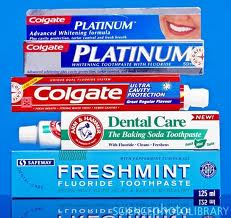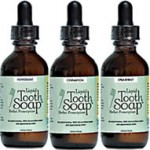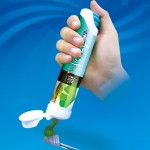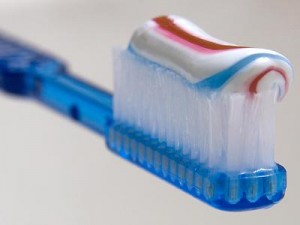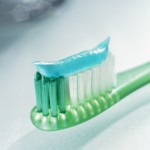There are many brands of toothpaste in the market available today, such as Colgate, Darlie, Fresh and white, Aquafresh, Sensodyne etc, all with different ingredients serving different purposes such as teeth whitening and fighting tooth sensitivity; but their main function is to fight decay. So how did the toothpaste first come about?
Category Archives: Toothpaste
How Neem Works
In the old days the people in India did not use neem toothpaste. They used neem toothbrushes instead. Chewing on a neem twig has for many centuries been the commonly preferred way to prevent gum disease and maintain healthy teeth. These rural people had never used a “real” toothbrush, didn’t know Crest or Colgate, yet they had perfect teeth. A perfect natural solution. Researchers believe the tradition of using neem twigs for dental care has helped Indian villagers to avoid cavities and tooth loss, although they have no access to modern dental care facilities or products. Continue reading
The History of Pepsodent Toothpaste
Pepsodent: the beginning
Pepsodent was a popular brand of toothpaste back in the mid-20th century. It was probably introduced in the earlier parts of the 20th century as a dentrifice in powder form, but eventually took on the recent-day paste form. Pepsodent was owned by the company Unilever, a British and Dutch company that sells an assortment of consumer products throughout the world, and was advertised through commercials and ads to be able to fight tooth decay and whiten teeth. Its most popular slogan was the catchy phrase, “you’ll wonder where the yellow went, when you brush your teeth with Pepsodentâ€, as evident in the youtube video below. Pepsodent was well-known for its minty flavor derived from sassafras, and was claimed to contain the key ingredients:
- Irium is actually sodium lauryl sulphate, a type of surfactant (detergent) that is commonly found in toothpastes nowadays. Lauryl sulphates help to clean teeth and provide foam that helps to carry away debris. It also has antibacterial properties and can penetrate and dissolve plaque.
- The other ingredient, “I.M.P†was purpoted to whiten teeth. What its letters individually stand for remains unknown.
 Continue reading
Continue reading
About Toothpaste Tubes Made of Metal
The first toothpaste tubes, appearing on the scene in the 1890s, originally were made entirely of metal. In the 1940s, because of metal shortages during World War II, they were constructed of a mix of plastic and metal. A hundred years after their invention, toothpaste tubes became completely manufactured of plastic as we know them today. Continue reading
How to Brush Your Teeth with Tooth Soap
Tooth soap is the product that replaces the usual toothpaste products with far more natural, gentle teeth-washing ingredients. Because let’s face it: You don’t actually need to “scrub” your teeth with sand, chemical preservatives and sweeteners. Some toothpaste products are quite harmful — they’re loaded with synthetic chemicals that simply can’t be considered safe for human consumption by any reasonable person. Cleaning your teeth only requires a type of soap, some water and some brushing action. You don’t need dyes, sweeteners, sand and other unnecessary ingredients. Continue reading
How to Fix a Stuck Toothpaste Pump
Toothpaste pumps are handy gadgets, and are also known as automatic toothpaste dispenser. They can pump out a measured toothpaste blob just right for a toothbrush. A toothpaste pump can be used with one hand, making it easy for people in a hurry, for children and for people with hand-coordination problems. Unlike a tube, it is made of a hard plastic and functions by pressing a knob on top rather than squeezing the tube.It was developed by someone in Germany, however, whom by is unknown, but it is known that there were a number of technical difficulties with the item before the item was perfected, these included storing the toothpaste in the tube without it drying out or indeed becoming too wet and runny, and perfecting the function of the tube, and ensuring it works correctly. Henkel were the first known in the world to sell their toothpaste in a pump. Sometimes the pumps quit working even if the pump tube still has toothpaste. With these simple steps you can get the toothpaste pump working again. Continue reading
How Does Toothpaste Work?
Dentifrices and mouthrinses are the major products for routinely administering effective cosmetic and therapeutic agents in the mouth. These products are the most widely used by consumers, generating the largest sales of all dental products. Besides attempting to prevent tooth decay, it is also becoming increasingly common for manufacturers to add therapeutic or preventive agents to reduce gum disease (gingivitis) and tartar (calculus) formation. A few toothpastes also contain desensitizing agents. Continue reading
Fluoride toothpaste
Does your dentist always remind you to use fluoride toothpaste? Many of us are aware of the  importance  of using an appropriate toothpaste but little do we know about the ingredients in the  toothpaste which protects our tooth from dental decay. There are several components in a  toothpaste which help in protecting the tooth: Continue reading
Random Facts About Toothpaste
1)Â Â Â Â Â Before we discuss about actions of toothpaste, let us venture into history to find out who invented toothpaste.
Toothpaste has come a long way over the years. Egyptians first used a paste to clean their teeth, which took place around 500 BC. Flowers, animal bones, oyster shells are the first few ingredients used as toothpaste during that time. Continue reading
Toothbrushing techniques for children with down syndrome
Tooth brushing is indeed a vital daily activity for a good oral health. Besides that, tooth brushing protects the teeth against dental caries and it also helps prevent bad breath and gum disease. Gum disease is a fatal condition as it may lead to serious diseases. Therefore tooth brushing is important in children and special attention is needed to be given to those with disabilities. Continue reading
